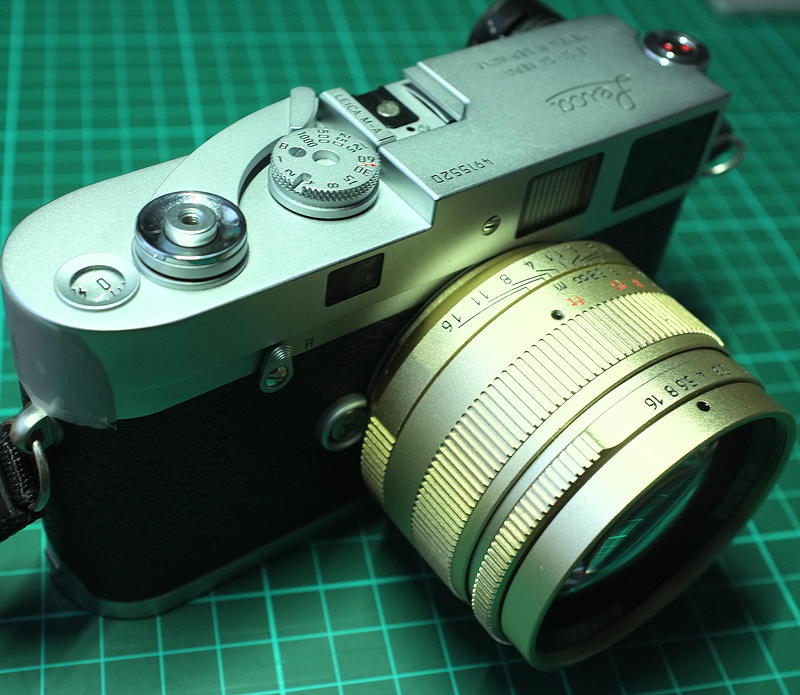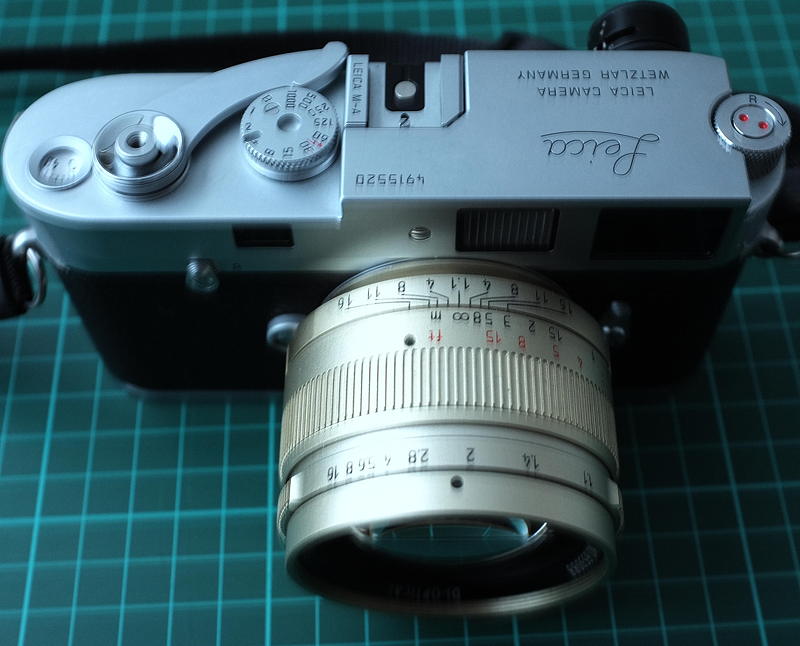The original Leica Noctilux 1.2/50 had a weight of 450 grams (officially 515 grams), a length of 53.5 mm from the bayonet and a diameter of 60.5 mm. Compare these dimensions with the current NX 0.95/50 mm: weight: 700 grams; length: 75.1 mm; diameter: 73 mm and you see the ‘progress’. The Canadian built version, the NX 1/50 mm had dimensions: weight: 630 grams; length: 62 mm; diameter: 69 mm. The growth in footprint and volume is clearly visible. For most people this price tag and volume are prohibitive, not to mention the visible departure from the Leica M philosophy: compact, high speed and excellent performance. Perhaps this is the reason why the original NX 1.2/50 mm is in such high demand. The price however is sky high and not worth the purchase. The current SX 1.4/50 mm ASPH is a much better choice. And the small drop in brightness transmission is not important in this digital age when the lens will be most probably attached to a digital M body. Even in the glorious silver-halide era a half stop loss of brightness was not a problem: you could change the toe of the characteristic curve of the film, probably Tri-X or HP5, when selecting the dedicated developer. Only when the faintest shadows, emitting a handful of photons, had to be captured with all the shades of dark grey, the additional speed advantage made sense.

Now we have the 7Artisans 50 mm f1.1 lens, produced in China. With a weight of almost 400 grams, a length of 48 mm and a diameter of 62.1 mm the lens falls within the parameters of the original NX 1.2/50 mm.
The aperture of 1:1.1 was a popular one In Japan when their rangefinder cameras became trendsetting. Nikon and Zunow to mention only two manufacturers offered such lens with a design that was based on the Zeiss Sonnar. The current Voigtlander Nokton 1.1/50 mm follows the Planar design.
The 7Artisans lens that I bought is a very special edition with a gold paint (only ten will be made). It has high refractive glass elements (above 1.9) and this property it shares with the NX 1.0/50. There are a few initial impressions. The focus movement is very smooth. The aperture ting is a classical one with non-equidistant distances between apertures (large at 1.1 and narrow after 5.6. The box includes a tool for self adjustment of the optical cell. Place the camera and lens on a tripod, focus on the (included) test chart and the location of the sharpness plane can be read off from the chart. When the focus is too near or too far, you can loosen two tiny screws at the back of the copper optical cell and turn the unit clockwise or counterclockwise according to instructions. It sounds complicated and you need to be very careful and repeat the operation several times before the focus is spot on. I used my M8.2 and MM2 and both required different settings. The smart choice was to settle for a position between both cameras.
A full test report will be published in the next part. For now a few quick observations. The lens follows a very classical pattern that is definitely 1950. At 1.1 the lens exhibits a low to medium contrast, and medium to high definition of small detail. Vignetting is clearly visible as is chromatic aberration. Bright spots show a blue and red colored fringe on both sides, but coma is remarkably absent. The performance is quite good in the centre covering a disc of about 30% of the total area. Test charts show very fine definition when sharpened a bit in Photoshop or any other post processing software. Handheld shooting shows commendable performance with fine detail crisply rendered in the centre and quickly becomes blurred when moving outwards to the edges. At this aperture it is clearly a lens for the rangefinder camera with the focus at the centre of the image. At 1:5.6 the performance becomes impeccable over the full area of the sensor and the lens can be used as a universal tool.

I compared the 7Artisans 50mmF1.1 with the Leica SX 1.4/50, both set to 1.4. Then the difference really becomes evident. The SX has a high contrast high definition image covering the full frame where the 7Artisans has a medium contrast medium definition image covering 40% of the area. The 7Artisans performance compared to the SX indicates the great progress made in the last decades. The Canon lens FD 1.2/55 mm for the F-1 in the early 1970s exhibits the same performance pattern. The wide open image has been called sharpish and not sharp to describe the overall impression of the lens. The 7Artisans lens improves on the optical quality of the Canon lens (also without aspherics), but the balance between contrast and resolution is shifted to the resolution edge, presumably because of the use of the lens on digital bodies, where contrast can be enhanced in post processing.
The price tag of the lens is extremely low (the Nokton is three times more expensive). One of the reasons is the low price of Chinese optical glass that is not as constant in quality as the Schott glass. Using a simple design (no floating, no aspherics) with only seven elements also helps to reduce the price.
At this price level the 7Artisans is highly commendable. The overall performance is good, but not superior, but to get the fingerprint of the classical lenses of the 1950s and 1960s there is o better choice.





